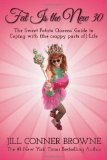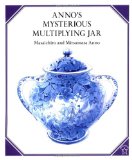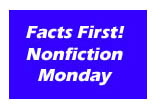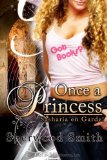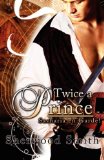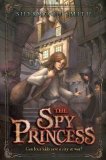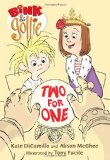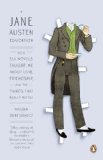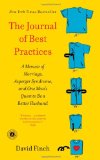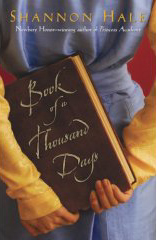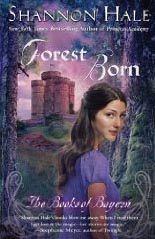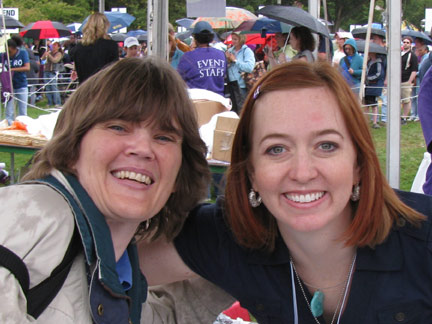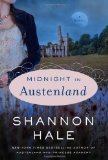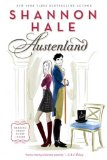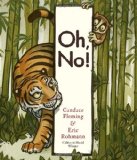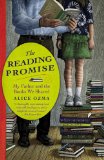Review of Fat Is the New 30, by Jill Conner Browne
The Sweet Potato Queens’ Guide to Coping with (the crappy parts of) Life
by Jill Conner Browne
Amazon Publishing, 2012. 254 pages.
Starred Review
2012 Sonderbooks Stand-out: #4 Other Nonfiction
I do so love The Sweet Potato Queens! This particular book adds some seriously good advice to the usual humor of Jill Conner Browne’s observations. Of course, keeping your sense of humor IS seriously good advice.
Jill Conner Browne sets the tone in the very first paragraph of the Acknowledgments:
The last few years have afforded me much experience in Coping with the Crappy Parts of Life referenced in the title of this book. However, it must be said that the Crap, plentiful as it has admittedly been, is overshadowed still by the Amazing, the Humbling, the Gratifying, and the Nifty. My prayer for us all is that we’re always able to pay more attention to those things in our lives and laugh our way around the Crap.
In the introduction, which is given the title “Fat Is the New 30!”, she says things like this:
Possibly the very best survival tool ever devised is the Concept of Complete Denial. My seester Judy and I have made this our Life’s Work. (Judy would like for it to be noted that she also has a minor in “Lolling.”) Someone once told me that if you study and practice something diligently for five years, you can become a bona fide expert at it. I shared this tidbit with Judy and we decided that we would commit ourselves to doing whatever it took to accomplish that in our chosen field, and I am happy to report that we were 100 percent successful, and also, it didn’t take us anywhere near five years. We are, as far as we can tell, the World’s Leading Authorities on Denial. No, we didn’t do much — OK, ANY — research into the possibility of the existence of other authorities and/or their potential superiority to us in this, our chosen field. We decided that we are the best, and if anybody says otherwise, well, we will just deny it. So, there. Done.
What I CAN offer you is some much-needed relief from the overwhelming stress we are all mired in (as a direct result of my not turning out to be the World-Saving Little Redheaded Singing Sensation), by making fun of all the messes and the people who made them — even if they are us, which, truth be told, they occasionally are. I will make you laugh even if you don’t want to — I can do that. It will feel good and you will feel better even though most everything will still suck. . . .
Daddy always said, “There are very few situations in life that we really and truly canNOT change, but when we do encounter one of those, then the task at hand is to figure out how to either make fun OUT of it — or to make fun OF it.” That advice has served me well in this life, so I offer it to you. But you don’t have my daddy to help you figure out how to actually DO it — and it does take practice. I got personal training from Daddy, plus I’ve had lots of experience at Spinning Crap Into Fun (also known as “Shit to Shinola” — similar in theory to the storied Spinning of Straw Into Gold — only, actually possible), so I think maybe I can help you with that.
We are fortunate to have many tools with which to fend off everything from boredom to disaster, but remember, no matter how bad it is, it’s much better to laugh than to cry — or to maim and kill, which will only make more trouble for yourself, so I discourage it, no matter how tempting it may be.
Here are some other random lovely bits of wisdom:
So, as you age, which I hope you will do sober — I truly cannot imagine trying to negotiate all these pitfalls drunk — and you find yourself starting a sentence but forgetting the targeted end before you even get to the middle, just keep talking, about anything, it doesn’t really matter what, just keep talking and nobody will notice that you’re lost. If you can REMEMBER to do this, it will serve you well.
How best to survive a spell in the spotlight that is not of our choosing? Laughing at ourownselfs, especially at our own extreme discomfort and/or embarrassment, is not the easiest thing in the world, but I reckon it’s a sight easier than spontaneous evaporation, which would, naturally, be our first choice.
“Money won’t solve all your problems.” That’s another one of those things that only ever gets said by people WITH money. It is true, of course, there are all manner of problems for which money is not the solution. However, it must also be said that if what you’ve got is a MONEY PROBLEM, well, then money is pretty much the only thing that will solve it. Yeppers, money is just the thing for fixing money problems.
And those erstwhile Wedding Vows? The ones where we promised to love, honor and cherish that Other Person (who, it should be noted, ALSO promised to do the same for US — and we see how well THAT worked out). What if we were to make and keep those vows — to OURSELVES?
Every coin has a flip side — well, except for those trick two-headed coins, but you have to pay extra and have those made special, so they don’t really count and are certainly not germane to this discussion. Suffice it to say that just about everything in this world that is making somebody wildly happy is, at the same time, prolly making somebody else equally miserable. it has become my job to identify those things and make fun of them, with the hope of relieving the suffering for even a moment and thereby furthering the cause of my Ultimate Mission in Life, which is, of course, World Peace.
Things happen that can’t be fixed. Relationships are ended by death, or maybe nobody’s dead, but the relationship might be ruined beyond repair. Sucks. Just make sure you don’t lose the LESSON, too — because there was one, every time.
Forgiveness — such a wonderful thing to give and to receive. We just have to remember to start that process in front of the mirror — you gotta give it to yourself and allow yourself to receive it before you can go any further with it.
If you keep one foot in yesterday and one foot in tomorrow, ALL you can DO is make a very unfortunate mess all over today. And today is all ANY-body has ever got. Let go of yesterday, quit worrying about tomorrow — grab hold of today and get your money’s worth out of it. See if you can make only NEW mistakes today and be grateful for the goodness of the moment.
And my personal favorite:
Life. It’s your birthday present. Open it up and play with it. Act like you like it. (The One who gave it to you is watching, after all. Don’t wanna hurt His feelings.) And if you don’t like your life, CHANGE IT. It is all yours.
That should give you the idea! If you like these tastes, be sure to check out the entire book. You will laugh, and you will be blessed.
Find this review on Sonderbooks at: www.sonderbooks.com/Nonfiction/fat_is_the_new_30.html
Disclosure: I am an Amazon Affiliate, and will earn a small percentage if you order a book on Amazon after clicking through from my site.
Source: This review is based on a library book from the Fairfax County Public Library.
Disclaimer: I am a professional librarian, but I write the posts for my website and blogs entirely on my own time. The views expressed are solely my own, and in no way represent the official views of my employer or of any committee or group of which I am part.
